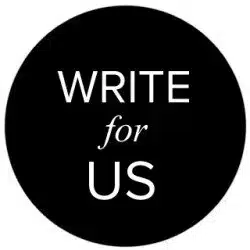When someone you love drifts deeper into dementia, you quickly realize that eating and drinking aren’t just a matter of a plate and cup anymore. There comes a point—often heartbreaking—when swallowing becomes a nod to instinct rather than choice. Now, we’re faced with the knotty conversation about artificial hydration and nutrition (AHN), and trust me, nobody strolls into this lightly.
I still remember my Aunt Clara’s hazel eyes flickering with recognition long after her words had vanished. She’d sip clear broth, choke, then lounge back as if exhausted from the effort. At that moment, I wondered: is tube feeding a lifeline or just prolonging the inevitable?
What AHN Means in Real Life
Artificial hydration and nutrition usually involve feeding tubes—nasogastric or percutaneous endoscopic gastrostomy (PEG)—and IV fluids when oral intake falls short. It sounds clinical, sure, but at its heart, we’re deciding whether to bypass nature’s route. There’s no simple manual for the emotional upheaval this sparks.
Let’s be frank: enteral feeding (the use of feeding tubes) in advanced dementia doesn’t prolong life or ward off aspiration pneumonia. In fact, studies show it can increase the risk of aspiration pneumonia and other complications, such as pressure ulcers and infections. It also often requires restraints to keep tubes from being yanked out. The decision to use AHN is common, but it’s important to understand the evidence behind its use.
When to Think Twice
Sometimes families assume that more calories must mean more life. But here’s the rub: the evidence doesn’t back that up. Enteral feeding can trigger diarrhea, reflux, and fluid overload. And if your loved one is bedridden, all that output sets the stage for painful skin breakdown. If you ask me, it’s less about fighting death and more about skirting dignity—and I’ve wrestled with that tension myself.
So, what’s the alternative? Comfort feeding—slow, patient, finger foods, that spoon coaxing. You’d be amazed how a small spoonful of applesauce, offered with a gentle hand and familiar chatter, can spark smiles. This approach doesn’t chase numbers on a chart. It cherishes the ritual, the texture, the warmth. It honors the person, not just the body.
Weighing Values and Wishes
Advance directives matter. Always ask: What would Grandma have wanted? If she adored her Sunday pancakes, maybe a few bites are worth the effort. If she was the kind to insist “just water’s fine,” let that guide you. In my own family, a hastily scribbled note in Mom’s handwriting saved us weeks of anguished debate: “No tube, more cheesecake.”
Of course, clinicians bring their own perspectives. They’ll outline risks and benefits—informed consent, yada yada. But at the end of the day, it’s a human decision. And humans aren’t spreadsheets.
The Takeaway
There’s no one-size-fits-all answer. The key lies in blending sound medical counsel with heartfelt respect for wishes and quality of life. AHN isn’t inherently cruel, but in advanced dementia, it’s often more burden than blessing. Consider the gentle path: the slow spoon, the soft cracker, the sip of juice. Really, it’s all about grace.
I’d love to hear your experiences or dilemmas: Have you wrestled with this choice? Drop a comment below, share on Facebook and Instagram, and let’s talk—because nobody should face these crossroads alone.
Sources:
- www.espen.org/files/ESPEN-Guidelines/ESPEN-guideline-on-nutrition-and-hydration-in-dementia-update-2024.pdf
- www.mdpi.com/2077-0383/13/21/6535
- www.cfp.ca/content/61/3/245

Say Hi to SelfWeightLoss’s Guest Authors! Many talented authors have submitted their article and contributed to get it bigger. Browse through this page. You may find the right author for you. If you think you would like to contribute to the blog, Please visit this page: https://selfweightloss.com/write-for-us and follow its guidance. Thank you!










